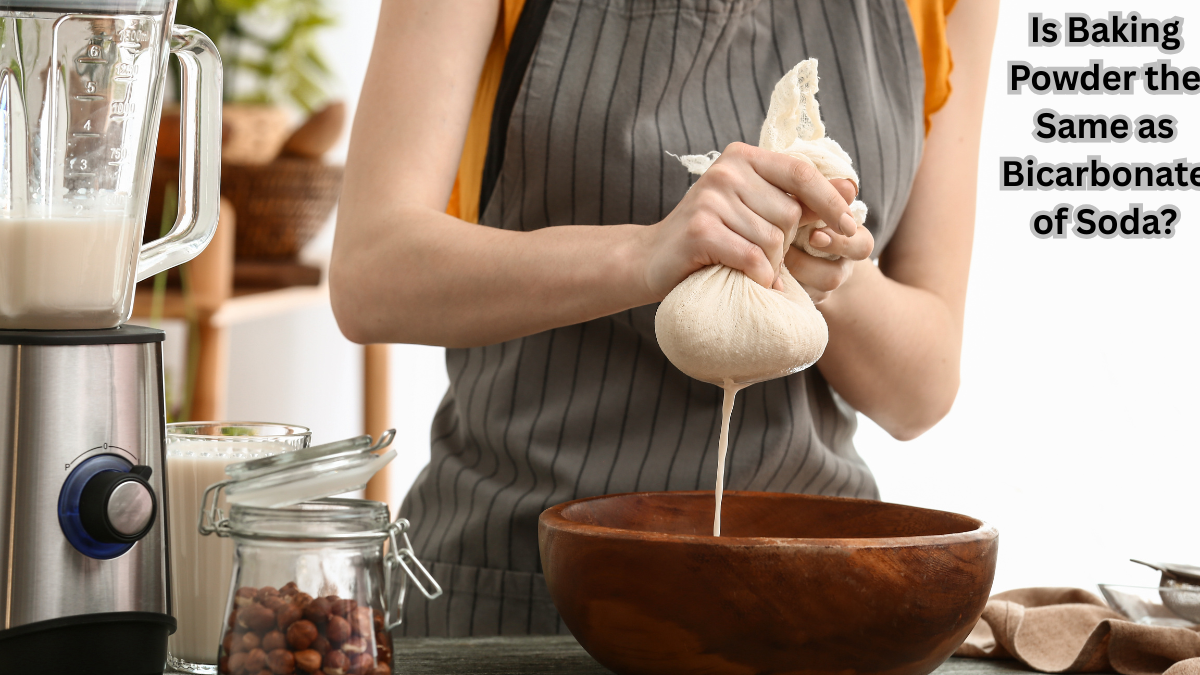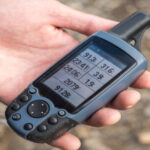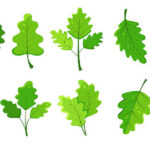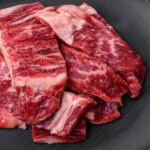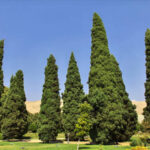If you have ever stood in your kitchen clutching two nearly identical containers—one labeled “baking powder,” the other “bicarbonate of soda”—you may have wondered whether they are simply two names for the same ingredient. The short answer is no: baking powder and bicarbonate of soda (often called baking soda in the United States) are related but distinct. Understanding their differences can be the key to baking success, preventing flat cakes, metallic tastes, or collapsed bread loaves.
This article unpacks the science, history, culinary uses, and cultural context of these two common leavening agents. Whether you are a home baker, a student of food science, or simply curious about what really makes your cookies rise, you will find that the story of baking powder and bicarbonate of soda is far richer than it seems.
What Exactly Is Bicarbonate of Soda?
Bicarbonate of soda, widely known as baking soda, is a simple chemical compound: sodium bicarbonate (NaHCO₃). It is a white crystalline powder with alkaline properties. When it encounters an acid—such as lemon juice, yogurt, or vinegar—it reacts immediately, releasing carbon dioxide gas. Those bubbles are what cause doughs and batters to expand, creating lightness and airiness.
It is pure in form, meaning there are no additional agents added to control or delay its reaction. Because of this, recipes that call for bicarbonate of soda must also include an acidic component to balance the chemistry. Without acid, the soda can leave behind an unpleasant metallic or soapy aftertaste.
What Is Baking Powder?
Baking powder, by contrast, is a carefully engineered mixture. It usually contains three components:
- Sodium bicarbonate – the same base compound found in baking soda.
- A dry acid – commonly cream of tartar (potassium bitartrate) or monocalcium phosphate.
- A stabilizer or filler – often cornstarch, which absorbs moisture and prevents premature reactions.
Baking powder is designed to be a “complete” leavening agent. It already contains both the alkaline and acidic ingredients, so it requires only moisture—and often heat—to activate. This makes it more versatile for recipes where the batter or dough does not naturally include acidic ingredients.
Most commercial baking powders today are “double-acting,” meaning they release carbon dioxide in two stages: once when mixed with liquid, and again when exposed to heat in the oven. This dual action ensures reliable rise, even if the batter rests for a few minutes before baking.
A Clear Comparison
To highlight the differences more sharply, here is a structured comparison of the two:
| Feature | Bicarbonate of Soda (Baking Soda) | Baking Powder |
|---|---|---|
| Chemical Composition | Pure sodium bicarbonate | Sodium bicarbonate + acid salt + starch |
| Reaction Requirement | Needs external acid to activate | Contains its own acid, needs only moisture and heat |
| Flavor Profile | Can taste bitter/soapy if unbalanced | Neutral flavor, less risk of aftertaste |
| Common Uses | Recipes with yogurt, buttermilk, citrus, molasses, vinegar | Cakes, muffins, cookies, quick breads without acidic ingredients |
| Speed of Action | Reacts immediately with acid | Double-acting: initial reaction + heat-triggered reaction |
| Shelf Life | Stable if kept dry | More sensitive; loses strength faster |
| Typical Substitution | ¼ tsp soda ≈ 1 tsp baking powder (with acid adjustment) | Not always interchangeable without altering recipe |
Why the Confusion Exists
Part of the reason people assume baking powder and bicarbonate of soda are the same is linguistic. In the United Kingdom and many Commonwealth countries, “bicarbonate of soda” or simply “bicarb” is the everyday term, while Americans almost exclusively say “baking soda.” Baking powder, on the other hand, is labeled consistently worldwide.
Adding to the mix is the fact that both substances look nearly identical: fine white powders stored in small tins or cardboard boxes. Unless one reads the label carefully, it is easy to confuse them. But substituting one for the other can spell disaster in the kitchen.
The Science of Leavening
Leavening refers to the process of introducing gas into doughs and batters so they expand during cooking. There are three major methods:
- Biological leavening (yeast and sourdough cultures producing carbon dioxide through fermentation).
- Mechanical leavening (whipping egg whites or cream to incorporate air).
- Chemical leavening (using baking soda or baking powder).
Bicarbonate of soda works only through chemical leavening, and only when an acid is present. Baking powder, containing its own acid, expands the baker’s toolkit by ensuring reliable rise regardless of the recipe’s other ingredients.
When heat is applied, carbon dioxide bubbles trapped in the batter expand further. Proteins in flour and eggs solidify, setting the structure around the gas pockets, and starches gelatinize. This creates the crumb texture of cakes, breads, and cookies.
Historical Origins
The story of these powders is deeply tied to 19th-century industrial innovation. Before chemical leavening, bakers relied primarily on yeast or painstaking physical methods such as beating egg whites.
- Bicarbonate of soda was first produced in the late 18th century by combining sodium carbonate (soda ash) with carbon dioxide. By the early 1800s, it was marketed in Europe and the United States for both culinary and medicinal purposes.
- Baking powder came later, around the 1840s. Chemists discovered that combining bicarbonate with cream of tartar created a ready-to-use leavening agent. By the mid-19th century, baking powder was being mass-produced, revolutionizing home baking by making it faster, more consistent, and less dependent on seasonal or local yeast.
The development of baking powder even spurred business rivalries, with competing brands fighting for dominance in American kitchens—a testament to how transformative this humble ingredient was.
Everyday Uses Beyond Baking
Although best known as leaveners, both bicarbonate of soda and baking powder have practical applications outside of cooking.
- Bicarbonate of soda:
- Household cleaning (neutralizes odors, polishes silver, scrubs surfaces).
- Personal care (toothpaste, deodorizing).
- Fire safety (used in some fire extinguishers).
- Baking powder:
- Primarily culinary, though sometimes used in cleaning as a mild abrasive.
- Less versatile outside the kitchen due to added starch and acid.
This difference in utility further underlines that the two substances are not interchangeable.
Can You Substitute One for the Other?
Sometimes you may find yourself mid-recipe, realizing you only have one of the two. Here is how substitution generally works:
- Using baking soda instead of baking powder:
Add ¼ teaspoon baking soda for every teaspoon of baking powder, but also include an acidic ingredient (such as vinegar, yogurt, or lemon juice) to activate it. - Using baking powder instead of baking soda:
You need more baking powder, since it is less concentrated. Usually, 1 teaspoon baking soda can be replaced by about 3 teaspoons baking powder, but the added starch may slightly alter texture and flavor.
Keep in mind that these substitutions are not perfect. Recipes are carefully balanced for pH, flavor, and rise. Making substitutions may require experimentation.
Common Baking Mistakes Linked to Confusion
- Flat cakes – caused by using baking soda without an acid, leaving no chemical reaction.
- Bitter or metallic taste – too much soda relative to the acid, leaving residue in the baked product.
- Dense texture – expired baking powder that no longer releases enough gas.
- Collapsed structure – adding too much soda or powder, leading to rapid gas release before the structure sets.
Understanding the role of each ingredient prevents these frustrations.
Cultural and Regional Perspectives
In Britain, recipes often call for bicarbonate of soda alongside an acidic liquid like treacle or buttermilk. American recipes more often rely on baking powder for cakes and cookies, reserving baking soda for specific recipes like chocolate chip cookies, where brown sugar provides natural acidity.
In India, both ingredients are widely used, but baking soda often doubles as a household remedy for indigestion. In East Asia, specialized leavening blends may include baking soda derivatives tailored for steamed buns.
Such variations show how the chemistry of rising agents adapts to cultural tastes and culinary traditions.
Shelf Life and Storage
Both powders lose effectiveness over time, but in different ways:
- Bicarbonate of soda is relatively stable. Kept in an airtight container in a dry place, it can last for years. However, once exposed to moisture or acid, it reacts instantly.
- Baking powder is more delicate. Because it contains both base and acid, it can degrade more quickly, especially in humid conditions. Most tins recommend using within 6 to 12 months.
A simple test helps determine freshness:
- For baking soda, add a spoonful to vinegar; if it fizzes vigorously, it is active.
- For baking powder, mix with hot water; bubbling indicates potency.
Nutritional Considerations
Neither baking soda nor baking powder adds significant calories, but they do contribute sodium. This can be a concern for people managing blood pressure or cardiovascular health.
- One teaspoon of baking soda contains about 1,260 mg of sodium.
- One teaspoon of baking powder contains about 480 mg of sodium.
Although most recipes use small amounts, cumulative intake should be considered, especially if combined with other salty foods.
Environmental and Industrial Dimensions
Sodium bicarbonate is produced industrially through the Solvay process, which also yields soda ash and other compounds. Its manufacturing has environmental impacts, including carbon dioxide emissions. However, bicarbonate itself is environmentally benign and even used in pollution control systems to neutralize acidic gases.
Baking powder production depends on food-grade acids such as cream of tartar, which is a by-product of winemaking. This link between industries is a reminder of how interconnected food science and agriculture are.
Baking Powder vs. Bicarbonate in Modern Recipes
Modern recipe developers carefully choose between the two based on flavor, texture, and convenience.
- Cookies: Soda encourages browning by raising pH, producing deeper flavors.
- Cakes: Powder ensures even rise without the need for additional acid.
- Quick breads: A combination of both may be used to balance flavor and structure.
This blending of agents shows that the question is not simply “which is better,” but “which is better for this specific recipe.”
The Takeaway
Baking powder and bicarbonate of soda are not the same. One is a single compound requiring acid to work; the other is a pre-formulated mixture designed to work independently. Their differences may appear subtle in the pantry, but in practice, they influence flavor, texture, and success in baking.
For anyone who bakes—even occasionally—understanding this distinction is one of the most valuable lessons in kitchen science. It empowers you not only to follow recipes but to adapt them with confidence.
FAQs
1. Can I use bicarbonate of soda in place of baking powder in pancakes?
Yes, but you must add an acid like yogurt or lemon juice to activate it; otherwise, the pancakes will not rise.
2. Why do some recipes call for both baking powder and bicarbonate of soda?
Because baking soda affects browning and flavor through pH changes, while baking powder ensures consistent rise. Together, they balance chemistry.
3. Does baking powder expire faster than bicarbonate of soda?
Yes. Baking powder contains both acid and base, making it more sensitive to humidity and less stable than pure bicarbonate of soda.
4. Is bicarbonate of soda safe to eat raw?
In small amounts, yes, but it tastes unpleasant and can cause stomach upset if consumed in excess without neutralization.
5. Why do British and American recipes use different terms?
“Bicarbonate of soda” is the traditional British term, while “baking soda” became the American shorthand. Both refer to the same chemical compound.

